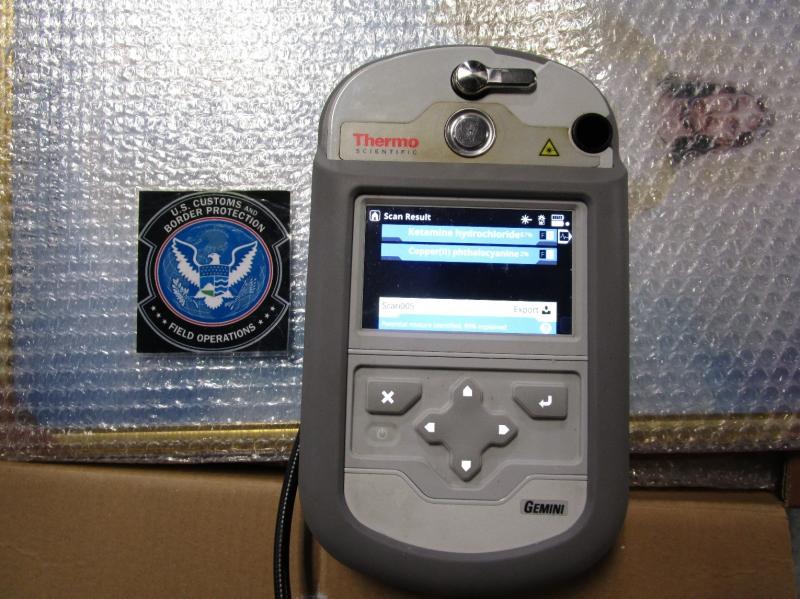LOUISVILLE, Ky—U.S. Customs and Border Protection (CBP) Officers in Louisville intercepted almost 10 pounds of ketamine concealed inside framed pictures. 
On June 3, CBP Officers seized a shipment containing 9.13 pounds of ketamine concealed inside the frames of six pictures depicting Jesus. CBP Officers extracted a white powdery substance from the frames. The substance was tested using a handheld chemical analyzer and determined to be ketamine.
Chief Customs and Border Protection officer Brian Lick said, “The use of religious articles to conceal narcotics and other illicit materials is a common practice used by traffickers with the idea that these articles will be looked at with less scrutiny by CBP Officers, however; our officers are very experienced and remain diligent and thorough in their examination regardless of the nature of the item.”
Like many anesthetics, ketamine has a legitimate use, and is commonly used for starting and maintaining anesthesia. It induces a trance-like state while providing pain relief, sedation, and memory loss. Other uses include sedation in intensive care and treatment of pain and depression. Abuse of ketamine is common for its dissociative and psychedelic effects, and it is sometimes known as a “date rape drug” due to being used to facilitate sexual assault. Ketamine abuse typically occurs at raves and nightclubs. A structural analog of phencyclidine (PCP), ketamine distorts perceptions, causes temporary paralysis and dangerously slowed breathing, and overdose can be deadly by shutting down bodily systems leading to cardiac or respiratory failure. It is a Schedule III non-narcotic drug regulated under the Controlled Substances Act.
CBP conducts operations at ports of entry throughout the United States, and regularly screens arriving international passengers and cargo for narcotics, weapons, and other restricted or prohibited products. CBP strives to serve as the premier law enforcement agency enhancing the Nation’s safety, security, and prosperity through collaboration, innovation, and integration.

